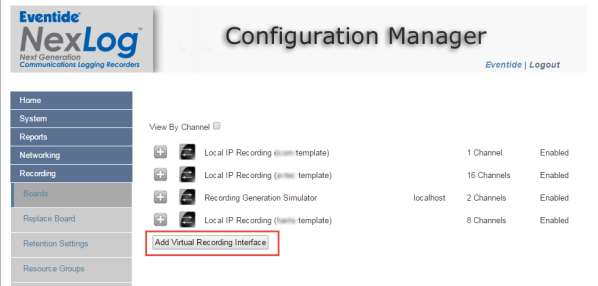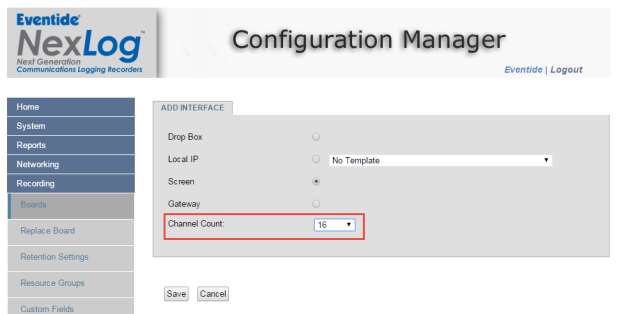6.4. Cisco CallManager Skinny Protocol (SPAN)¶
6.4.1. Cisco CallManager Skinny Protocol (SPAN) Introduction¶
The purpose of this document is to describe the steps to ensure a successful integration between an Eventide NexLog740 or NexLog840 Logging recorder and Cisco Call Manager using “SKINNY” Protocol via SPAN port.
This integration will be accomplished by utilizing the The Switch Port Analyzer (SPAN) feature of a managed IP switch, this is sometimes referred to as port mirroring. The NexLog will “sniff” the IP packets on the SPAN port, interpret the SKINNY protocol, and perform audio recording. The Switch Port Analyzer (SPAN) feature was introduced on IP switches initially for monitoring and debugging purposes. This same feature is used to aggregate VoIP call traffic from many VoIP calls/phones into one port. Once configured, the switch will forward IP packets from the mirrored ports to the designated “SPAN” port.
Configuring the Switch Port Analyzer (SPAN) feature on a Cisco switch (or other managed switch) is outside the scope of this document. However, a wealth of information can be found on a Cisco support page.
Once the switch is configured appropriately, there will be corresponding information to be entered into the “Cisco Call Manager “SKINNY” Protocol (SPAN)” template in the NexLog Web Configuration Manager.
6.4.1.1. Required Personnel¶
Eventide dealer/reseller Technician
LAN Administrator
6.4.1.1.1. Cisco Call Manager “SKINNY” Protocol (SPAN) configuration detail¶
6.4.1.2. NexLog firmware version and Licensing¶
Ensure that the NexLog is running Firmware Version 2.5.x (or greater). Ensure that the NexLog is licensed appropriately for VOIP/RTP VoIP Channels. VoIP recording is licensed in groups of 8 channels, this example system has 32 channels. If proper licenses are not present contact Eventide technical support before proceeding.

Fig. 6.56 Licenses in groups of 8¶
6.4.1.3. Configure physical Network Interface Card for SPAN¶
Connect a straight-through network cable from the Cisco Call Manager SPAN port to the corresponding physical network interface card that you are about to configure below.
On the network interfaces menu, select one of the currently unused Network Interface devices and Select “Type” SPAN. No other fields need to be entered.
Save the template.

Fig. 6.57 Configure SPAN¶
6.4.1.4. Add Virtual Recording Interface¶

Fig. 6.58 Add Virtual Interface¶
6.4.1.5. Select the number of IP channels¶
Note, this is the maximum number of phones that can be recorded

Fig. 6.59 Select IP Channels¶
6.4.1.6. Select “Cisco Call Manager “SKINNY” Protocol (SPAN)” Template¶

Fig. 6.60 Select Template¶
6.4.1.7. Fill in the Cisco Call Manager “SKINNY” Protocol (SPAN) Template Fields¶

Fig. 6.61 Add Template Fields¶
Template Field Detail
Ethernet Device: Select the physical Ethernet/NIC of the NexLog recorder which is used to connect directly to the SPAN port, configured earlier in this section
Typical Source: LAN Administrator
SCCP Port: Port used for SKINNY protocol, default is 2000 and typically this is used
Typical Source: LAN Administrator
RTP Ports: RTP ports that the NexLog recorder will use to record audio, default is 2001-65535 and is typically not changed
Typical Source: LAN Administrator
Channel IP or MAC Address: IP address or physical MAC addresses of phones connected to the ports to be recorded/mirrored to the SPAN port. If DHCP is used in the environment, it is recommended to use the physical MAC addresses
Typical Source: LAN Administrator
6.4.1.8. Save the template¶
After filling in all the fields, select “Save”. The NexLog will configure itself to record from the configured SPAN port.
6.4.1.9. Verify Recording¶
Place a series of test calls between phones inside and outside calls. Use MediaWorks DX or the front panel display to verify recording of all test calls.